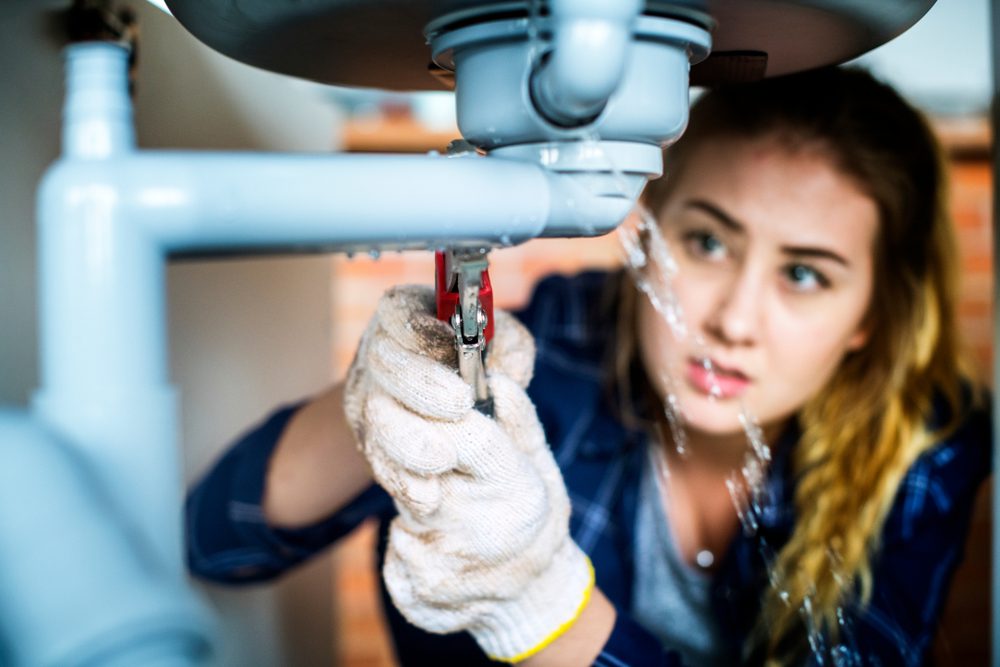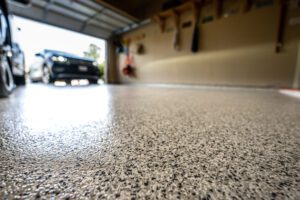DIY projects can be fun, and in the right conditions, doing them yourself can help you give your house a new look without spending too much money. However, when it comes to complex home improvement projects, not seeking help from a local contractor isn’t always the best choice.
Not only does it cost a fortune to reverse the damage when a DIY project goes wrong, but it can also result in some pretty big fines from your local authority and even compromise your safety.
To help you avoid these pitfalls, we’ve rounded up 9 home improvement projects you’d better not DIY. Check this out!

1. Removing a Wall
The list starts with a big no-no. If you fancy having a more open layout and are willing to make this happen all by yourself, perhaps removing a wall may sound like a good idea. Well, you may want to reconsider this option. We highly recommend not turning this idea into a DIY project, especially if you haven’t had an expert assess the wall beforehand.
Don’t forget that some walls support the weight of the roof structure above, and if this is the case, you risk damaging your house’s structural integrity. If you’re seeking help from an architect, they should be able to tell whether a wall is load-bearing or not and eventually advise you on this matter. Alternatively, you can get a consultation from a structural engineer.
2. Repairing Your Roof
It’s pretty obvious when you think about what fixing up your roof involves: making your way toward a very steep drop. However, you may be willing to take the risk when some broken tile or some kind of leak crops up and opt for a DIY project to repair the damage.
If your roof needs to be repaired, you’ll need an expert to come and assess your house. Roofs are far more complicated than they may seem, and those working on them should know that in most cases, DIY projects end up failing.
There are lots of things to consider when working on a roof, such as wind resistance, insulation, waterproofing, and obviously the legal standards set out in US building regulations.
3. Repairing a Chimney
Tackling a chimney repair alone is definitely a bad idea. You should undeniably call an expert that specializes in masonry. DIY projects have grown quite popular in the past two decades since the inception of YouTube, so people enjoy watching “how-to” videos to become more knowledgeable and save money.
Well, you should save your passion for DIY projects for other kinds of home repairs. Here’s why: A properly working chimney ensures that you and your family are healthy and safe. If your chimney isn’t in tip-top shape, you don’t want to rely on DIY skills to fix it.
When repairing a chimney, it’s recommended you get a masonry expert on board who will know exactly what needs to be done.

4. Becoming Your Own Plumber
Whether you want to install your new dishwasher or your own wet room, plumbing comes with pretty much the same rules as electrical stuff—namely, stay away from DIY projects.
While fiddling with your pipes won’t send you to A&E, it can still cause a lot of problems if things go wrong. There are many myths about plumbing, but when it comes to tackling issues like a broken pipe, it’s best to forget about anything you heard that could solve your problem and call an expert.
Without professional knowledge, pipes can burst, and your waterproofing may not be enough. This may result in a very soggy house and, of course, a very big repair bill.
5. Altering a Party Wall
A party wall is a wall, outbuilding, or boundary that you share with another household. Party walls are quite common in semi-detached houses and townhouses, as well as in detached properties if you share an invisible boundary line or a garden wall.
Altering a party wall may sound great, but it’s more complicated than it sounds since you share it with another household. If you’re thinking about making any alterations to a party wall, you’ll first need to get written consent from the affected third parties. Assuming they refuse, you’ll need to hire a party wall surveyor to put together a legal agreement. In other words, a DIY project involving a party wall is against the law.
6. Installing New Lighting
As rewarding as DIY projects can be, some are better left to the experts—like electrical work! As a general rule, you shouldn’t attempt to do any electrical project by yourself unless you have experience in the area. There’s no denying that DIY work is affordable and saves the trouble of hiring a contractor. But is it worth the risk?
Changing bulbs is one thing, but tampering with your mains is pretty dangerous on so many levels. Not only could you wreck your fuses if you’re not completely sure of what you’re doing, but you may even get electrocuted.
It’s estimated that nearly half of all electrical shocks in the US are caused by DIY projects.
7. Demolition
Perhaps you’re renovating and have decided to make some significant changes. Good for you! But make sure your home improvement project doesn’t include tearing down either an outbuilding or a part of your house.
There’s a common misconception that demolishing something is as simple as picking up a sledgehammer and going “smash.” In reality, though, tearing down any large structure is quite complicated. DIY projects and demolitions simply don’t go well together.
Our recommendation is to never try to demolish any part of your house on your own, as it takes special structural knowledge to do this safely. Likewise, if any plumbing or wires are involved, it’s best to leave it to the experts.

8. Removing Asbestos
Perhaps you know the whole story about asbestos. Basically, it was widely used in home construction from the 1940s through the 1970s as an inexpensive fire-retardant material and acoustic and thermal insulator.
Meanwhile, it was found that all forms of asbestos can cause chronic respiratory conditions, mesothelioma, and even lung cancer. In 1989, the US Environmental Protection Agency tried to ban the majority of asbestos products by issuing a final rule. Unfortunately, it was overturned, and this harmful material is still imported from other countries.
Now, perhaps you will want to know if your house contains asbestos. The only way you can do that is by having a professional test for it. If the test detects asbestos, you may want to remove it, but you should never attempt it alone.
This approach is a terrible idea and can result in you breathing in the fibers, which can severely harm you. Therefore, forget about any DIY project, leave the material alone, and get an expert on board as soon as possible.
9. Painting the Exterior of Your Home
Painting the exterior of your house is dangerous for the same reasons repairing your roof can be—there is a lot of height involved. But not just this; if you end up choosing the wrong material for the job, you can expose your house to the elements. This is definitely something that can damage your property, which would eventually require additional expensive repairs.
So, a DIY project can be a hassle if you haven’t done it at least several times. Why not save the risk and get some professional painters instead? They will know exactly what to do—the necessary prep steps, and so on.
You may also want to read 18 Amazing Home Upgrades You Can Effortlessly DIY.















